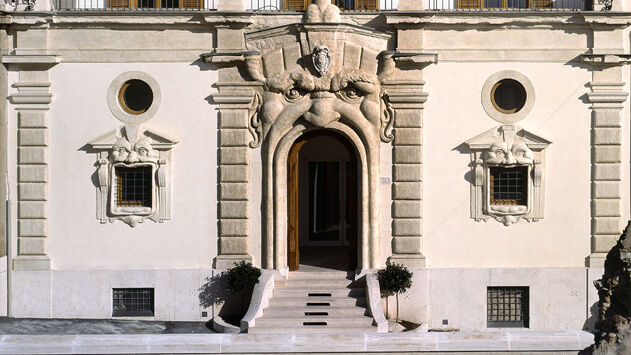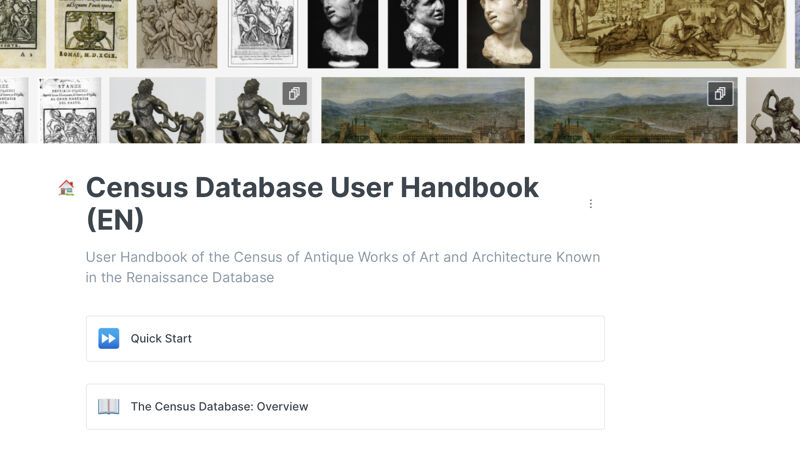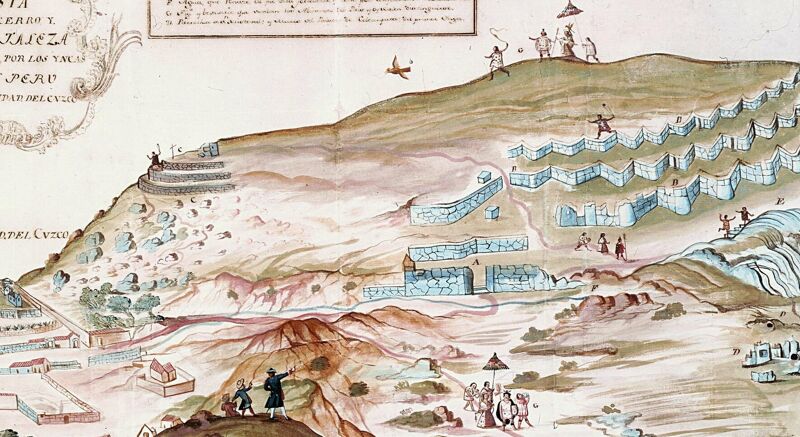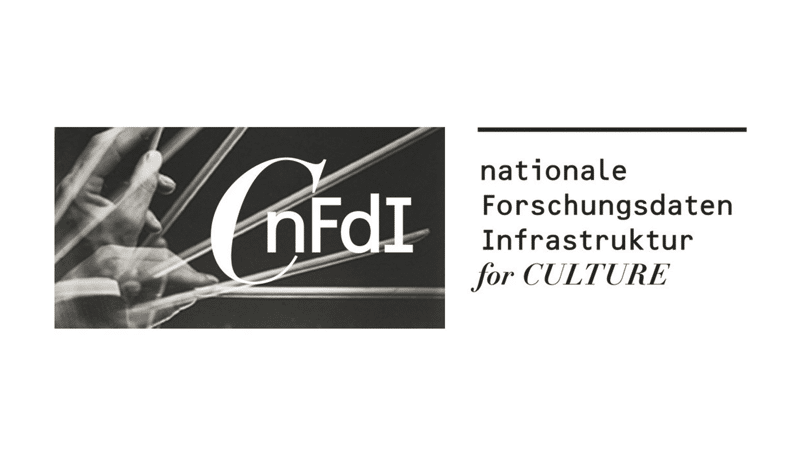Latest News
Call for Applications: Census Fellowship in the Reception of Antiquity
Humboldt-Universität x Bibliotheca Hertziana x Warburg Institute Application deadline: June 8, 2025 The Institut für Kunst- und Bildgeschichte, Humboldt-Universität zu Berlin, the Bibliotheca Hertziana – Max Planck Institute for Art History, and the Warburg Institute,…
All News Posts
Call for Applications: Census Fellowship in the Reception of Antiquity
Humboldt-Universität x Bibliotheca Hertziana x Warburg Institute Application deadline: June 8, 2025 The Institut für Kunst- und Bildgeschichte, Humboldt-Universität zu Berlin, the Bibliotheca Hertziana – Max Planck Institute for Art History, and the Warburg Institute, School of Advanced Study,…
CFP: “Future of the Antique” Conference
Call For Papers: The Future of the Antique, Warburg Institute and Institute of Classical Studies (University of London)Wednesday 10, Thursday 11, Friday 12 December 2025Deadline: 15 May 2025The original 1981 Yale University Press edition of Taste and the Antique significantly shaped the field’s…
New Book in Press: Raffaele Riario, Jacopo Galli, and Michelangelo’s Bacchus, 1471–1572
A new book in the series All’antica is planned for release in May in print, and in ebook format. Jacopo Galli, and Michelangelo’s Bacchus, 1471–1572, Kathleen W. Christian On Michelangelo’s first day in Rome, in June 1496, Cardinal Raffaele Riario asked him if he could create ‘something beautiful’…
Online Catalogue of the Codex Coner
The Codex Coner, now in the collection of the Sir John Soane’s Museum, London, is an extraordinary album of architectural drawings from the sixteenth century. The drawings, by the Florentine draughtsman Bernardo della Volpaia (c.1475–1521/22), were highly prized in their day and many were copied…
Conference: La forma delle Muse
La forma delle Muse: un dialogo di parole e immagini Università degli Studi di Urbino Carlo Bo 9 — 11 DICEMBRE 2024 Palazzo Bonaventura — Aula Magna Rettorale, Via Saffi, 2, Urbino LUNEDÌ 9 dicembre (sessione pomeridiana) — ore 15.00–19.00 Saluti istituzionali Giorgio Calcagnini, Magnifico…
New Post for Verso by Jorinde Lea Miller
A new essay in both English and German versions has been added to the Census research blog, Verso: ‘Forgery, Imitation, Emulation: the Creation of Antiquity in the Renaissance’ / ‘Fakt und Fake: Eine Antike neuzeitlicher Kreation’ by Census student assistant Jorinde Lea Miller. The Census database…
Conference: Exploring the Legacy of the Past in Venice
Exploring the Legacy of the Past in Venice: Networks and Quantitative Methods in Archaeology and Art History, International Symposium 5 December 2024 3:00–5:30 PM Chair: Guido Caldarelli (CNR-ISC/Ca’ Foscari University of Venice) 3:00 Keynote Speech Visions for the Future of the “Census of Antique…
Conference, La fabrique de l’antique
The international conference, La fabrique de l’antique: Les sculptures antiques entre collections et institutions muséales 16e – 19e siècles will take place in Rome and in Paris between the 21st and the 25th of October, 2024. The programme is offered jointly by the Académie de France à Rome /…
Census x Hertziana x Warburg Fellow: Karl-Magnus Brose
Between November 2024 and July 2025 Karl-Magnus Brose will be hosted in Berlin, Rome and London as a Census x Hertziana x Warburg fellow. The fellowship was first inaugurated as a partnership between the Census and the Hertziana in 2022, and expanded in 2023 to include the Warburg Institute. Karl…
Census IDs are Now Wikidata External Identifiers
In the Census database, many records are associated with unique Census IDs: not only Antique Monuments and Postclassical Works, but also Images, Locations, Periods, Styles, Persons, and Bibliographic Records. While Census IDs have long been used by researchers as a means of referencing the Census…
Antiquarian Drawings Workshop, Oxford, September 5–6
Creativity and Invention in Antiquarian Drawings (1400–1600) Workshop, Ashmolean Museum, September 5–6, 2024 An upcoming workshop to be held at the Ashmolean Museum will center on the creativity and invention of Early Modern drawings of antiquities, which are still too often understood as…
Towards a Collaborative Cultural Analysis of the City of Rome II
Workshop, 11–13 June, 2024, Bibliotheca Hertziana, Villino Stroganoff, Via Gregoriana 22 Kathleen Christian and Katharina Bedenbender will participate in a second workshop on the topic ‘Towards a Collaborative Cultural Analysis of the City of Rome’ at the Bibliotheca Hertziana in Rome on June…
Exhibition: Chefs‑d’Oeuvre de la Collection Torlonia
Louvre Museum, Paris, 26 June-11 November 2024 The Torlonia marbles, the most extensive private collection of Roman antique sculpture ever assembled, were acquired by the Principi Torlonia in the 19th century in Rome. Now, for the first time since the mid-20th century, they are being displayed to…
Logiques du négatif, part 3
Traces et empreints dans l’art du Moyen-Âge et des temps moderns Following meetings at the Université Catholique de Louvain and at the Humboldt-Universität in Berlin, the group Logiques du négatif will be holding a third symposium at the University of Fribourg on 15–16 May, 2024. The aim of this…
Three All’Antica Sessions at RSA
At the Renaissance Society of America meeting in Chicago, 21–23 March 2024, three sessions will be devoted to topics related to the reception of the antiquity. These sessions will explore themes related to antique reception in Italy and Mediterranean, Northern Europe, and the Eastern Adriatic.…
Excursion Rome-Florence
Between February 20 and 23, a group of BA and MA students in from the Humboldt University spent four inspiring days on an excursion to Rome and Florence studying the topic of museums, collections and museology in Italy between the 15th and the 21st centuries. Professors Kathleen Christian and Eike…
Census Fellowship in the Reception of Antiquity
The Institut für Kunst- und Bildgeschichte, Humboldt-Universität zu Berlin, the Bibliotheca Hertziana – Max Planck Institute for Art History, and the Warburg Institute, School of Advanced Study, University of London, are pleased to announce a fellowship in Berlin, Rome, and London, offered at…
Call for Participation: Linking Linked Data in Art History Interest Group
Linked data (LD) has been a focus of much activity in the fields of cultural heritage, humanities and art and architectural history over the past several years, as evidenced by projects including Yale’s Lux search tool and the conversion to LD of the data in the Census and the Getty Provenance…
Digital Resource Review by Matthew C. Coleman
The new Census database received a positive review from Matthew C. Coleman in the journal Renaissance and Reformation / Renaissance et Réforme (vol. 46, no. 1 (2023), pp. 217–221). Highlights from the review include: ‘Census’s old, bright blue and grey colour scheme, reminiscent of the now…
New User Handbook and Changes to the Census Database
A new user handbook for the Census database has been published and is now available here. The handbook offers a complete guide to all of the features and search functions of the database. The handbook also reflects adjustments have been made to the new database since its launch in April, 2023.…
Cooperation with Ubi erat Lupa
The Census project has over the last year begun to work in close cooperation with the project and database Ubi Erat Lupa directed by Ortolf and Friederike Harl (Vienna). Ubi erat Lupa charts the geographic reach of the Roman ’she-wolf’ with a continually-expanding collection of records on the…
Conference: Alphonsus Ciacconius und die Ordnung antiquarischen Wissens im 16. Jh.
Alonso Chacón (†1599), known by his Latinised name Alphonsus Ciacconius, was a Spanish antiquarian and scholar active in Rome. Ciacconius planned the publication of several volumes of an illustrated antiquarian compendium referred to as the Antiquitates Romanae. The work was never published and…
Erasmus Fellow Giorgia Agostini
As part of her PhD research and thanks to the Erasmus traineeship program, Giorgia Agostini will conduct research at the Census for six months, between October 2023 and March 2024. Giorgia Agostini is a PhD student in the History of Art programme at the University of Florence, Pisa and Siena. She…
New post for Verso by Christopher Lu
Christopher G. Lu, a Rhodes Scholar at the University of Oxford, has published a new blog post for Verso. Lu is currently reading for an MSt in Modern Languages at Oxford and specialises in Renaissance art and intellectual history. Lu’s post for Verso follows up on a topic he began to explore in…
New SPARQL Endpoint
The data of The Census of Antique Works of Art and Architecture Known in the Renaissance has been semantically modelled according to the CIDOC-CRM framework and transformed into RDF/XML files. These files will soon be deposited on the edoc server of the Humboldt-Universität, where they will be…
Census x Hertziana x Warburg Fellow: Hugh Cullimore
Between November 2023 and March 2024, Hugh Cullimore will be conducting research in Berlin, Rome and London as a Census x Hertziana x Warburg fellow. The fellowship was first inaugurated as a partnership between the Census and the Hertziana in 2022, and it now expands for the first time this year…
New post for Verso by Juan Carlos G. Mantilla
Juan Carlos G. Mantilla, an assistant professor of world literatures at California State University in Fresno (USA) has written a new essay for the Census research blog Verso. Mantilla’s essay, titled Sacsayhuaman in Early Modernity: the Invention of New Ancient Edifices, examines the various ways…
Towards a Collaborative Cultural Analysis of the City of Rome
The Census project will participate in a workshop at the Bibliotheca Hertziana between 26.6.2023 and 28.6.2023 on the topic of a collaborative digital project focused on the city of Rome. Please see below for a description of the conference by the organisers: The purpose of the workshop is to…
Warburg Institute joins Census x Hertziana Fellowship
We are very pleased to announce that the Warburg Institute has joined the Census x Hertziana Fellowships in the reception of antiquity. Thanks to a generous contribution from the Warburg Institute, the Census fellowship can also now also be offered for a longer period. One fellow per year will…
Contact: Transcultural Techniques and Metaphors of Imprinting (30–31 May)
With the explosion of new reproductive technologies starting in the fifteenth century, antiquities were among the most sought-after subjects for copies, reproductions, impressions, seals, casts and moulds. Although there has been extensive research on antiquarian prints and other types of…
New database interface now live
The Census database has upgraded to a new system and a new interface. There are several aides to help you navigate the new system: A user guide (available in English only) A webpage with FAQs (in German and English) A help video (available in English only) A live discussion and training session…
New post for Verso by Clara Sawatzki
Student Assistant Clara Sawatzki has written the first blog post for Verso, the new Hypotheses research blog of the Census. Please follow the link below for the full version of her text, published in both English and in German. Geflügelte Pferde und schneckenförmige Delfine: Eine erweiterte Sicht…
New Hypotheses blog: Verso
We are pleased to announce the launch of the Hypotheses research blog Verso, a platform for short, illustrated essays dealing with the history, methodology, technology and use of the Census of Antique Works of Art and Architecture Known in the Renaissance. Verso will offer members of the Census…
Census Database System Update
The Census database will be unavailable this Friday, January 13, 2023, for one day due to a system update. All data will be copied that day and migrated into a new database, which will be available starting in February 2023. The old database will be accessible again as usual by Monday, January 16,…
The Census joins ARIADNEplus
Over the past year efforts have been underway to integrate the Census data according to the CIDOC-CRM framework so that its resources can be shared with those of other projects. Integration with similar art-historical projects is underway through collaboration with CORDH, and to link Census data…
Recycling Beauty: Salvatore Settis and Rem Koolhaas in Milan
From 17 November 2022 to 27 February 2023, the Fondazione Prada in Milan will be hosting a new exhibition on the reception of antiquities from the Medieval to Baroque era. Following up on the successful ‘Serial / Portable Classic’ (2015), Salvatore Settis and…
The Early Modern Invention of the Ancient Andes
The Institut für Kunst- und Bildgeschichte is very pleased to welcome the first Census x Hertziana Fellow, Juan Carlos Mantilla, who has begun a 6‑month research project titled, ‘The Early Modern Invention of the Ancient Andes’. During his fellowship, Mantilla will participate in both the Census…
The Census Joins CORDH
We are very pleased to announce that the Census project has become a member of the international consortium CORDH, Consortium for Open Research Data in the Humanities. This group brings together research institutions committed to developing shared data models, using in particular in CDOC-CRM, in…
New Census x Hertziana Fellowship
The program “Art History in a Global Context” at the Bibliotheca Hertziana – Max Planck Institute for Art History and the “Census of Antique Works of Art and Architecture Known in the Renaissance” at the Institut für Kunst– und Bildgeschichte, Humboldt–Universität zu Berlin, are pleased to…
Census Semantic Data Models published
In 2021–2022, George Bruseker and Denitsa Nenova of Takin.solutions have been coordinating the Census data with the semantic framework used most often for cultural heritage data, the CIDOC-CRM. More specifically, they have been aligning the Census data with the CIDOC-CRM modelling standards for…
RSA Dublin, 4.2022
At the Renaissance society of America meeting in Dublin, Ireland on 2 April, 2022, Kathleen Christian and Cammy Brothers co-chaired a double-session on the topic of “The Antiquarian Drawing as a Site of Creative Invention.” The event marks one of the initiatives of the current Census research…
NFDI4Culture Forum: Census Data as Linked Open Data
On May 2, 2022, Kathleen Christian and Franz Engel (HU Berlin) together with Denitsa Nenova (Takin.solutions Athens) will present the upcoming development of the transformation of Census data into Linked Open Data (LOD). The Census team was invited by NFDI4Culture’s Working Group on Data Standards…
New Web Address for the Census Database
As part of a major technical update which is currently underway, the Census database will have a new URL and from April 21, 2022 will be available at https://database.census.de. For a minimum of one year, a redirect will be set up so that links to Census records from other databases and websites…
Farnese Exhibition in Parma
On 18 March the exhibition I Farnese. Architettura, Arte, Potere will open in Parma at the Complesso monumentale della Pilotta. It will continue until 31 July, 2022. The exhibition, curated by Simone Verde, will will take a comprehensive view on the Farnese family’s collections and their patronage…
Now online: 75th Anniversary Exhibition
The 75th anniversary of the Census of Antique Works of Art and Architecture Known in the Renaissance falls in 2021, and to mark the occasion a group of students at the Humboldt-Universität and the Warburg Institute have created an online exhibition, ’75 Years, 1946–2021. From Index Cards to Online…
Pegasus 20.2020 in Print
The latest issue of Pegasus, number 20, offers a broad spectrum of research on the reception of antiquity. Among the contributions is an article by Henri De Riedmatten, which lays the foundations for future research on the iconography of Lucretia in the 16th century. Lothar Sickel’s archival…
New Photographic Campaign
A photo campaign begun in 2021 and which will continue over the next years will add thousands of new photographs to the database. This wide-ranging campaign will significantly improve the visual resources of the Census, both for antique monuments and for Renaisssance works of art. The Institute…
The Census Lays the Foundations for Linked Open Data
In 2021 the Census is working with the company Takin.solutions to make the Census data Linked Open Data. Although the current Census database is an open access resource that is freely available online, its data cannot currently be linked to that of other research projects. The first step towards…
New Funds for the Census Database
With the appointment of Kathleen Christian as Professor of Early Modern Art at the Institut für Kunst- und Bildgeschichte in the Summer of 2020, the Humboldt-Universität and the Berlin University Alliance have provided new funding for the development and renovation of the Census database. This…
















































